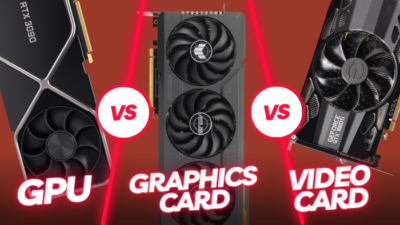Having a good understanding of temperature can save PC products from a variety of troubles. And the GPU is one of the computer’s most expensive components.
You’ve probably heard of GPU temperature or overheating. But what is the hotspot temperature? Is it out of the ordinary?
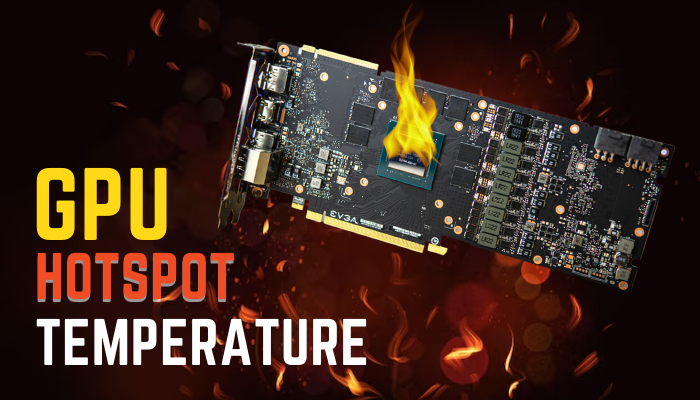
In the following article, I will explain what hotspot temperature is and why you should be concerned about it. So, without further ado, let’s start.
What is GPU Hotspot Temperature?
GPU hotspot refers to the warmest sensor on the graphics board’s die. This can be found in various sections of the graphics unit and varies from card to card. A GPU hotspot usually indicates poor cooling or an indication that the thermal paste has dried up.
Previously, there was only one sensor to read the temperature of the graphics card. And that sensor is normally placed center of the GPU board. GPU has different components such as VRAM, central processor, and RAMDAC.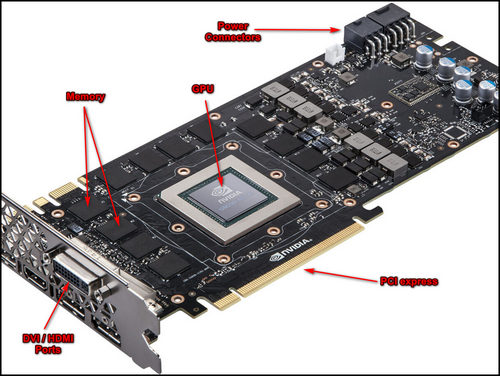
That being said, one of the difficult aspects of the hotspot of GPU was that the hotspot is not always in the same location – this can happen on the VRAM or maybe on the processor or other places.
As I already mentioned, previously there was only one sensor. So, when there was a hotspot temperature of 120c a little away from the main sensor, the sensor just show 95 degrees Celsius.
As a result, many GPU chips become toasty at an early age due to the high temperature. But times have changed, and technology has advanced to the point where old incidents sound like a joke.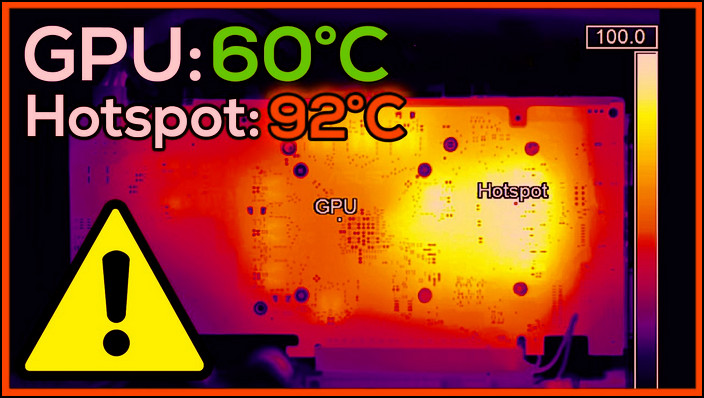
So you have an idea that a hotspot happened when a particular component of the GPU becomes hotter. In addition to the GPU processor, high temperatures are caused by VRAM (Memory) too. Also, VRAM is not the same as RAM.
So, What does the idea of memory temp vs. hotspot temp mean?
The detector with the maximum temperature is read as a hot spot. The memory on your graphics unit is known as VRAM or Video Ram. Your VRAM heat is represented by the Memory temperature.
The hotspot temperature marks the highest temp of your GPU. This could be your GPU processor, memory, or other graphics unit components. So, if the Memory temperature is higher than the GPU temperature, the hotspot will mark that temperature as the hotspot temperature.
VRAM or memory can withstand temperatures ranging from 80°C to 95°C. When the Memory mining intensive algorithms, it can easily reach a high temperature.
Hundreds of temperature sensors are now installed on the GPU die. The maximum measured temperature of all sensors is now referred to as the GPU hotspot.
A CPU is located in the center of the GPU board and is responsible for processing graphics data. It was also made of silicon. So, the temperature of 125 degrees Celsius should be of concern to you. Because one degree more than 125c will degrade your GPU processor.
GPU hotspot temperature is the high temperature that can be caused in various graphics unit body locations. Furthermore, the hotspot temperature is usually higher than the monitoring temperature. When the temperature is 95 degrees Celsius, the hot spot temperature may be around 110 degrees Celsius.
Furthermore, this hotspot temperature measurement evaluates the temperature of the silicon chip. The maximum safe temperature range for the hotspot is 110 degrees Celsius.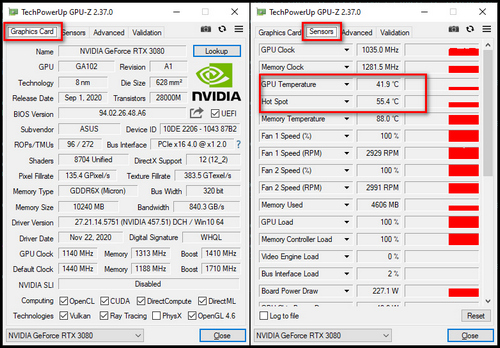
The average and hotspot temperatures are not the same. And one of the GPU’s main hotspots is where the central processing unit is connected to the GPU board. And you will notice that the backside of that particular location becomes excessively hot.
What Is Adequate GPU Hotspots Temperature?
The idle GPU hotspot temperature ranges between 80 and 90 degrees Celsius under heavy load. It also does not go below 45 degrees Celsius. Even so, due to the thermal sensor’s placement and optimization, this temperature range may vary from brand to brand.
For example, the maximum temperature of AMD cards is higher than Nvidia cards. Now let’s talk about the ideal temp of a GPU hotspot.
Here is the ideal hotspot temperature range for the GPU:
Hotspot Temps vs. Average Temps
GPU engineers discovered that when there is 125c on the silicon, the heat sensor reads 95c. That is the distinction between hotspots and average temperatures.
So, the GPU’s maximum safe temperature is 90 degrees Celsius, and you must stay within that range. More than that can be harmful to the GPU.
Recent GPUs include sensor grids that allow you to monitor the average and hotspot temperatures separately. Particularly, HWInfo allows you to monitor the hotspot temperature of your graphics unit.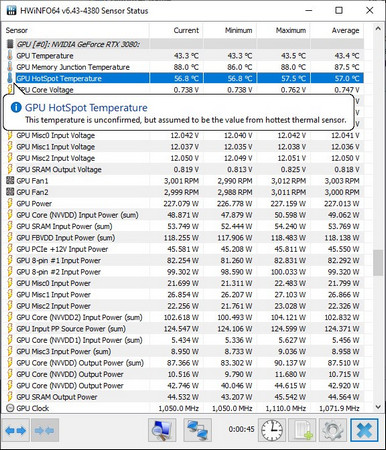
Max Hotspot Temps Depending on manufacturers
As previously stated, the maximum hotspot temperatures vary depending on the manufacturer. It is also determined by card optimization technologies.
Nvidia graphics cards rarely exceed 85 degrees Celsius in temperature. It also differs from model to model. However, AMD graphics cards operate at significantly higher temperatures than Nvidia graphics cards.
AMD employs Adaptive Voltage and Frequency Scaling technology to measure die temperature from various GPU areas.
Overall, the idle hotspot temperature ranges from 65°C to 85°C, while the average idle temperature ranges from 30°C to 40°C. Furthermore, AMD GPUs operate reliably, even at 100°C.
Why Is GPU Hotspot Overheating?
Similar to GPU overheating, hotspot overheating is brought on by an almost similar factor like unoptimized airflow, a broken fan, or a dusty GPU. But, particularly for hotspots overheating thermal paste is one of the main issues to increase heat.
Make sure to pay close attention to the hotspot temperature if you don’t use a monitoring tool like HWInfo. How you can develop an idea about determining hotspot temperature?
The hotspot temperature is approximately 30 degrees Celsius higher than the average temperature. So, if the GPU temperature is 60 degrees Celsius, the hotspot temperature is around 90 degrees Celsius.
Also, keep in mind that you are safe until you reach 125 degrees Celsius for hotspot temperature, where the average temperature is 95 degrees Celsius. Let’s look at why the GPU hotspot overheats and how to fix this unusual problem.
Here are the reasons and fixes for overheating graphics unit hotspots:
High Room Temperature
When the ambient temperature is high, the PC components run a little hotter than usual. Because, when using an air-cooled system, the PC normally draws air from outside. As a result, the GPU runs a little hotter. This causes the hotspot temperature to rise faster than usual.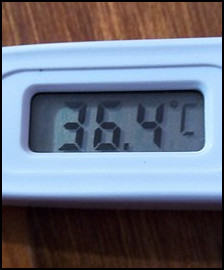
The best way to solve this problem is to lower the ambient temperature. You can also reposition your PC to improve airflow.
Bad or Dusty Fans
The only cooling solution for the GPU is its built-in fans unless you convert it to a water-block cooling solution. Besides that, your GPU cooling system is jeopardized due to a broken fan or a fan that has stopped working.
One of my favorite cards was the Asus ROG Strix RTX 2080 Ti, which I used without issue for a long time. And I didn’t normally monitor the GPU temperature because I wasn’t having any problems. But, one day while gaming, it began to jitter and eventually crashed with a blue screen.
Then I discovered that my GPU’s average temperature is approaching 95 degrees Celsius. It was terrifying, and after a few days, I discovered that two of the blades were broken. After contacting my seller, I changed the fans, and the overheating problem was resolved.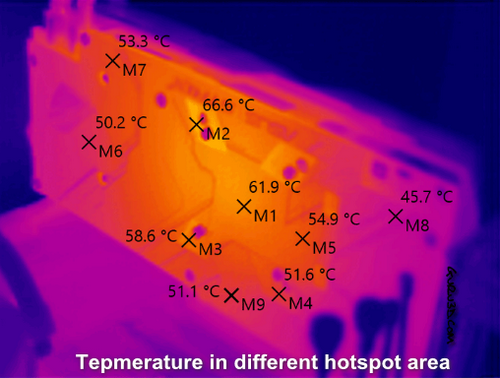
So, can you guess what my hotspot temperature was during those overheating moments? When I checked HWInfo, the temperature was 127 degrees Celsius. I thought my GPU was toasted, but it survived because I was able to identify the problem and take the necessary action quickly.
You should also make it a habit to clean your GPU on a regular basis. GPU fans pile up dirt particles over time, hampering their ability to reduce temperatures. In addition, if your GPU’s fans are damaged, you can replace them.
GPU Thermal Paste
The central GPU processor is one of the main hotspot sections of the GPU. And, to precisely determine the temperature on the silicon chip, I suggest you use HWInfo, which shows hotspot temps separately.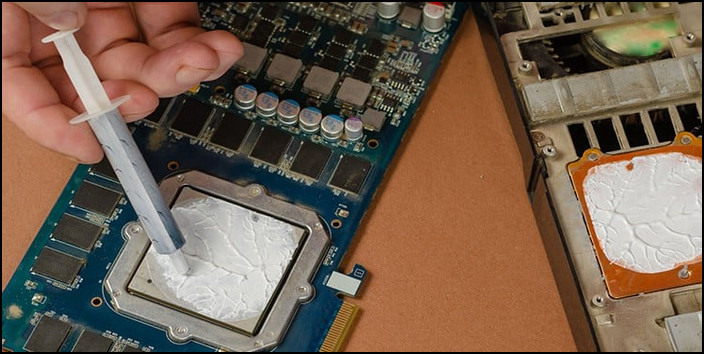
Thermal paste becomes an issue for overheating, especially for hotspots, because there have been numerous reports of bad thermal paste being used in many cards.
As a result, the hotspot temperature frequently exceeds 110 degrees Celsius. It is time to try a new thermal paste. A good thermal paste can reduce temperatures by 25-30 degrees Celsius.
In contrast, if your card is more than two years old, you should replace the thermal paste on your GPU processor. Over time, the thermal paste simply dries up. According to devotees, you need to change the thermal paste after 2 years.
Insufficient Cooling
When it comes to overheating, a properly optimized cooling system can solve the problem enormously. So, if you discover that your hotspot temperature is higher than 110 degrees Celsius, you must optimize your cooling system.
You can accomplish this by organizing the direction of the fans and, if space allows, adding more fans. When your system’s cooling is insufficient, the temperature of your GPU hotspot rises.
Take the time to properly organize your fans. And direct the fans so that proper intakes and exhausts are present. As a result, the overall hotspot temperature will be reduced.
Inadequate PSU
When under load, a good GPU requires a lot of power. When your power supply is unable to provide the required voltage to the GPU, the temperatures rise. Also, you will lose FPS for the PSU or experience a jittery performance from it.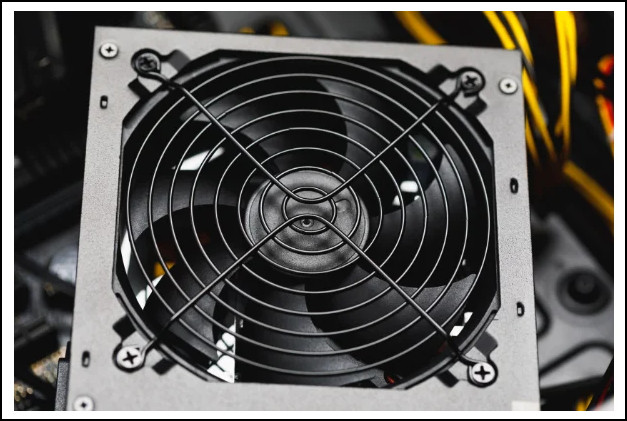
When you connect a GPU to your system, you should also check your power supply. Many bugs and issues will arise if the power supply is insufficient. It will not only harm your graphics card, but it will also harm other components such as the CPU or motherboard.
Conversely, when the power supply is unable to provide power to the components, the PSU can overheat and cause overheating problems.
Having said that, when purchasing a GPU, you also need to invest to get a good power supply too. An adequate power supply not only powers your components, but it can also help them last longer.
How to Cool Down Hotspot Overheating on a Laptop
The architectures of a PC and a laptop are vastly different. With a little assistance, any novice can open the computer and solve common problems on the desktop.
Laptops, on the other hand, are far more complicated. The CPU and GPU are soldered to a single board inside the laptop. Normally, the heat from the laptop is removed via the exhaust fan.
If you notice that your GPU temperature is higher than usual, your GPU hotspot temp is more likely to reach higher. A cooling pad can be used to reduce the temperature of the hotspot. This is the best solution for cooling down the laptop’s temperature, which also works on hotspot temperature.
FAQs
How hot is too hot for a GPU to run?
Temperatures between 90 and 100 degrees Celsius are considered too hot for a GPU. When a card’s range has exceeded this limit, it suffers permanent damage. However, AMD graphics cards can safely operate at 110 degrees.
What is a safe hotspot temperature for RTX 3080?
The concepts of GPU hotspot temperatures differ slightly. When the GPU temperature is 70 degrees Celsius, the hotspot temperature can reach 95 degrees Celsius. And temperatures ranging from 80 °C to 90 °C on a hotspot are considered safe for the RTX 3080.
Is 90 degrees of GPU hotspot temperature too much?
You shouldn’t be concerned if the hotspot temperature is above 90 degrees Celsius. The risk zone for GPU hotspot temperature is 125 degrees Celsius. So, if the temperature is around 90 degrees Celsius, there is still room for it to rise.
Wrapping Up
The temperature of the GPU hotspot is approximately 30 degrees Celsius higher than the average temperature. And, as with the overheating issue, you should keep the hotspot temperature in mind.
An overheating hotspot can degrade your GPU’s silicon. It may also cause damage to the other components on the GPU board.
And I demonstrated how to determine and manage the hotspot temperature throughout the article. In addition, you can use HWInfo to precisely monitor the hotspot temperature.

